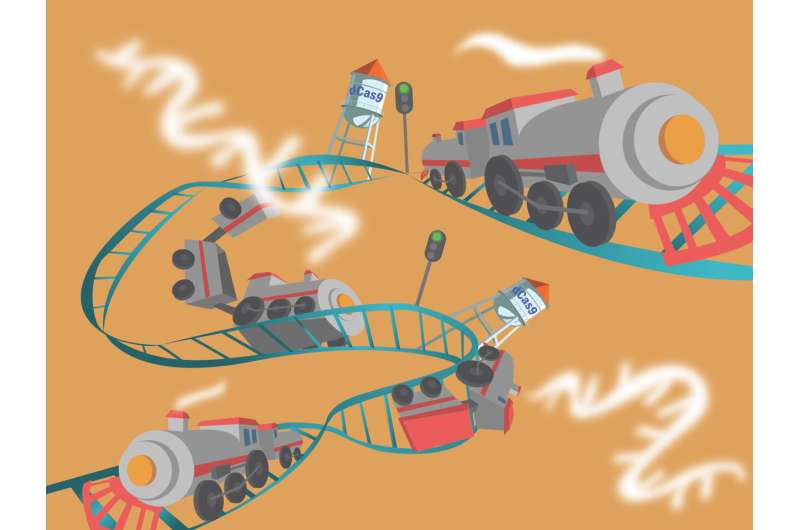Rice University researchers report:
A team led by Rice bioengineer Isaac Hilton and graduate student Kaiyuan Wang used deactivated Cas9 (dCas9) proteins to target key segments of the human genome and synthetically trigger the transcription of human genes.

“We’re using these synthetic biology tools to improve the ability to engineer gene expression and program human cells, and consequently to better understand how our genes work naturally,” Hilton said. “These types of studies are important because in the long run this knowledge and these technical capabilities can enable better gene and cell therapies and biotechnologies.”
“Only around 2% of our genome contains protein-coding genes, and the remaining 98% is so-called noncoding DNA,” Hilton said. “Enhancers and promoters are key parts of our noncoding genomes and, although the vast majority of these elements do not make conventional genes, there is fascinating genetic variation in noncoding DNA. This variation gives us the magnificent diversity that enables our species to be both amazing and adaptable.”
“However, genetic variation in noncoding DNA is also strongly correlated with many diseases, and even subtle differences in these regions can be linked to pathologies,” he said. “A pressing challenge is that it is often very difficult to pinpoint how these differences influence disease onset and treatments.”
“Our goal and our hope is that technologies and approaches like ours can help researchers get closer to making those important connections, and to ultimately predict and thoughtfully intervene in disease,” Hilton said.
By synthetically activating noncoding DNA, the researchers demonstrated how promoters—short DNA sequences that mark the start sites of genes—and enhancers can communicate. Remarkably, enhancers can be thousands of base pairs away from their promoters but can stimulate gene transcription by recruiting activator proteins and by forming direct physical contacts with associated promoters.
Their strategy revealed that enhancers and promoters can have “intrinsic reciprocity.” While they knew that signals can be transmitted from an enhancer to a promoter, they learned that this transmission can go the other way as well.
“We see regulation taking place from a promoter to an upstream enhancer,” Wang said. “Mechanistically, that’s considered noncanonical and thus rather surprising.”
Full article at Phys.org.
Research is uncovering a greater degree of complexity within DNA beyond that of a “simple” library of genetic information. It’s worth noting that the proper functioning of enhancers and promoters within our non-coding DNA makes us “amazing and adaptable,” but that “even subtle differences in these regions can be linked to pathologies.” These observations point strongly to a tightly designed complex system whose functionality is dependent upon a very narrow parameter space within possible arrangements of the DNA’s base pairs.